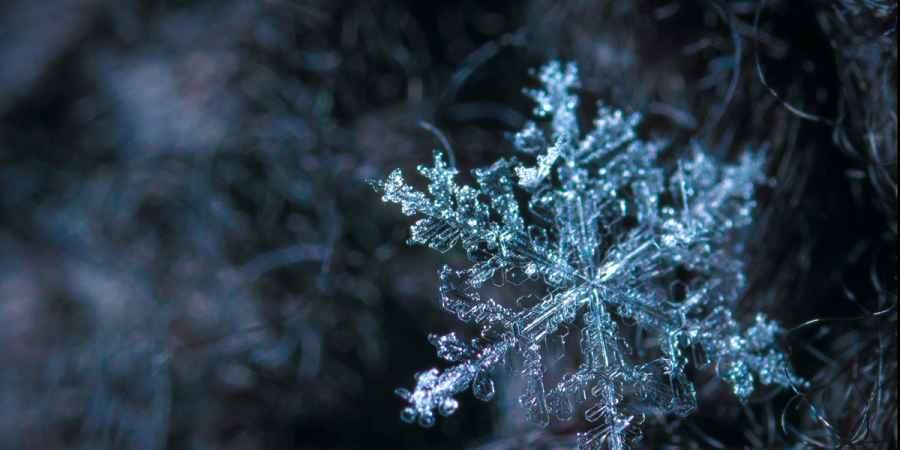Explaining Cold Spots & Temperature Fluctuations In The Paranormal World

Photo: © Egor Kamelev
From works of fiction to paranormal investigations, the concept of cold spots has been firmly cemented in the world of ghosts and hauntings. These are areas where the temperature is noticeably cooler than the surrounding environment and can be persistent, spontaneous, or fleeting.
The most commonly cited belief relating to these perceived or measured temperature fluctuations is that they signify the presence of a spirit or ghost. The theory goes that spirits require energy to manifest a physical form or interact with our physical world. This energy could be drawn from the environment, including the thermal energy in the air. By absorbing this heat energy, the ghost creates a noticeable drop in temperature, resulting in a localised cold spot.
This notion is so ingrained in paranormal folklore that it frequently appears in popular culture, such as in movies like 'Casper' and 'Poltergeist III', where characters experience a chill in the presence of supernatural entities. In the latter, clairvoyant Tangina Barrons delivers the line, "Can you feel the cold? He's devouring the heat, the energy."
Unlike a lot of theories about the mechanics behind paranormal principles, this idea does comply with the laws of thermodynamics. These fundamental laws tell us that energy cannot be created or destroyed, only transferred or changed from one form to another. In a lot of allegedly paranormal sightings, energy seems to come from nowhere. For example, an unexplained light might be seen, or the sound of a disembodied hand pounding a door might be heard. These two actions require energy. The idea that ghosts absorb heat energy from their surroundings does help explain this energy deficit.
The laws of thermodynamics tell us that energy can't be destroyed, and if we assume that a cold spot is formed when a ghost absorbs the energy, then we could ask where this absorbed energy goes. But if the ghost is indeed using it to go about its ghostly business, then this also fits with our current understanding of the universe, at least in part. However, the idea of a non-physical entity interacting with physical energy presents a few issues.
Firstly, the process of drawing and then storing energy is a physical process. For instance, living organisms consume energy in the form of food, plants draw energy from sunlight, and even a rock placed in sunlight absorbs the energy of the Sun. All these processes occur in the physical realm and are governed by the laws of physics.
For something non-physical like a ghost to do something similar, it would go against these rules. Physical actions need a physical presence – something solid and real. A ghost, which we think of as being without a physical form, wouldn't have what's needed to touch or absorb physical energy like living things or machines do.
Also, for anything to store energy, it usually needs some sort of physical body or system, in the same way that animals store energy in their bodies from the food they eat, and batteries keep electrical energy inside them. There's always something solid and real holding that energy. But when we talk about ghosts, it doesn't quite make sense. How can something that isn't physically there hold onto energy? It's a bit like trying to catch rain in a net – the water just slips right through.
Paranormal researchers don't just focus on cold spots and downward temperature changes, they also report unexplained warm or hot areas, which are also attributed to supernatural entities. The idea of an area warming up doesn't fit with the common theory about cold spots. The belief that cold spots are created by spirits absorbing thermal energy, leaving the area colder, doesn't help explain how ghostly temperature rises might occur.
Hot or cold temperature anomalies are often cited as evidence of ghostly activity, but there is no scientific proof to conclusively link the two. As such, paranormal investigators should consider all possible explanations, both natural and supernatural, when encountering these temperature anomalies.
While these fluctuations can be measurable, proving their supernatural origin is challenging. Natural explanations, such as poor insulation, the presence of warm-bodied living creatures like humans or animals, a draught, air currents, sunlight, heating vents, air conditioning, or electronic devices.
When it comes to paranormal investigations, researchers use similar methods to track both cold and warm spots. This typically involves the use of thermometers or thermal imaging cameras, which allow them to see temperature changes in real-time. When a device detects an area of significant temperature change with no apparent natural cause, it might be considered noteworthy in a paranormal context.
That said, the use of certain gadgets, such as infrared thermometers or thermal imaging cameras, can be misleading. These devices measure the temperature of surfaces, not air, and therefore cannot accurately alert you to the presence of a cold spot or hot spot. Despite their popularity on ghost hunting shows, they might not be the best tools for detecting this particular phenomenon. A regular digital or glass thermometer often provides a more accurate and immediate reading of the ambient air temperature.
Investigators often talk about the importance of taking baseline tests, but the reality is that taking meaningful baseline readings of temperature is virtually impossible.
Most haunted locations are not controlled environments. These places, ranging from old mansions to abandoned hospitals, often lack the consistent environmental controls found in modern buildings. Factors such as central heating, air conditioning, or even the absence of such systems can greatly influence temperature readings. The age and condition of a building can also play a significant role, with older structures often having poor insulation, leading to more significant temperature fluctuations.
The number of people present during an investigation can also affect temperature readings. Human bodies emit heat, and a group of investigators moving through a space can inadvertently raise the temperature, potentially leading to false positives when searching for hot spots.
External weather conditions are another critical factor. Seasonal changes, time of day, and local weather patterns can all influence the temperature inside a building. For example, a room may naturally be cooler at night or during the winter, which could be misconstrued as a paranormal cold spot.
To account for these variables, investigators would need to gather temperature data over extended periods, covering different times of day and various weather conditions. This data would help form an understanding of the normal temperature ranges for each area under investigation. However, this level of data collection is often impractical for many paranormal investigation teams, particularly those operating with limited resources or time constraints.
As with all aspects of ghost hunting, approaching these phenomena with an open mind and a critical eye is essential for anyone seeking to understand the mysteries of the unseen world. However, there are several logical and scientific challenges with the concept. These challenges stem from our current understanding of physics, energy conservation, the nature of non-physical entities, and the difficulties inherent in measuring and verifying such phenomena.
More Essential Parapsychology View All
Related Content
Daily Horoscopes
You May Also Like
























